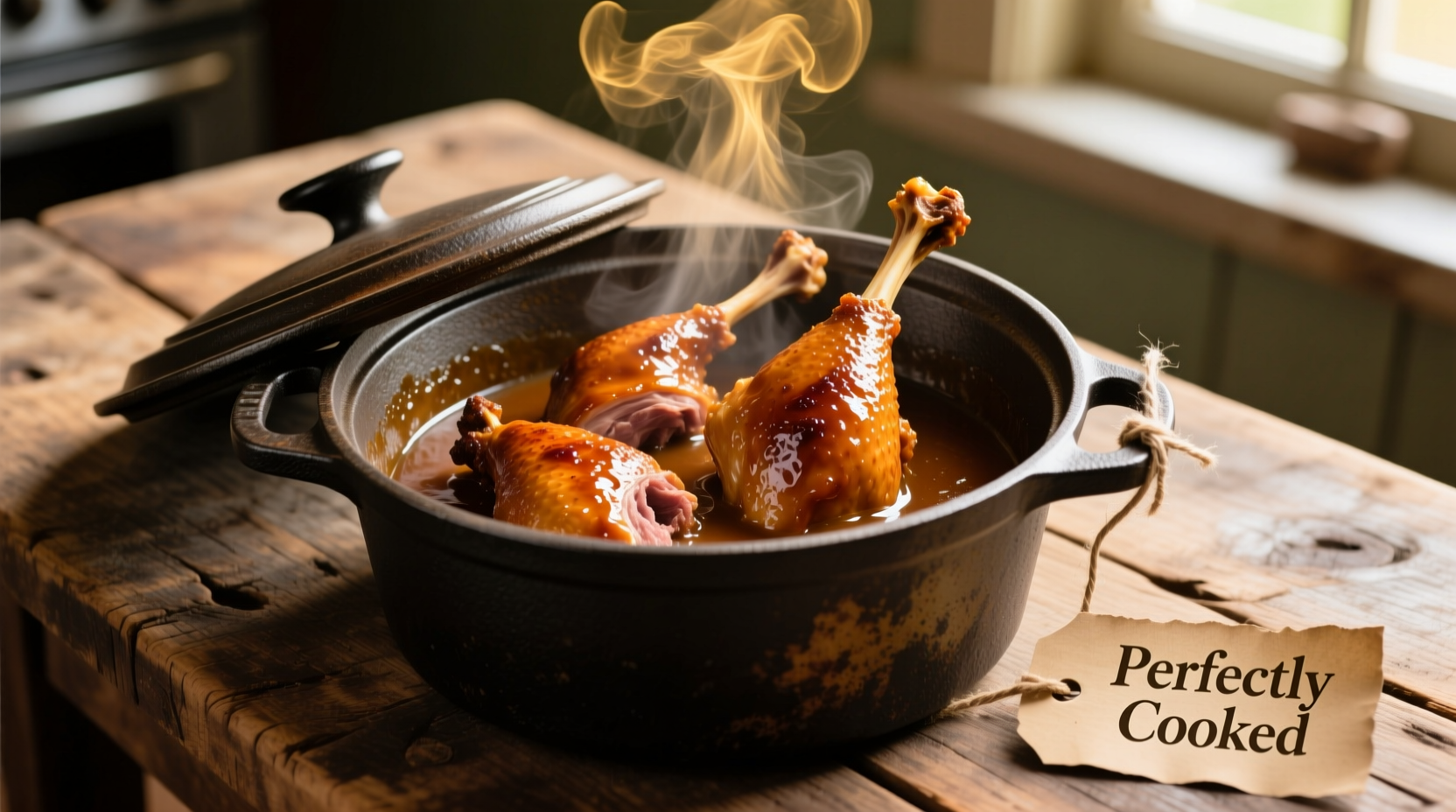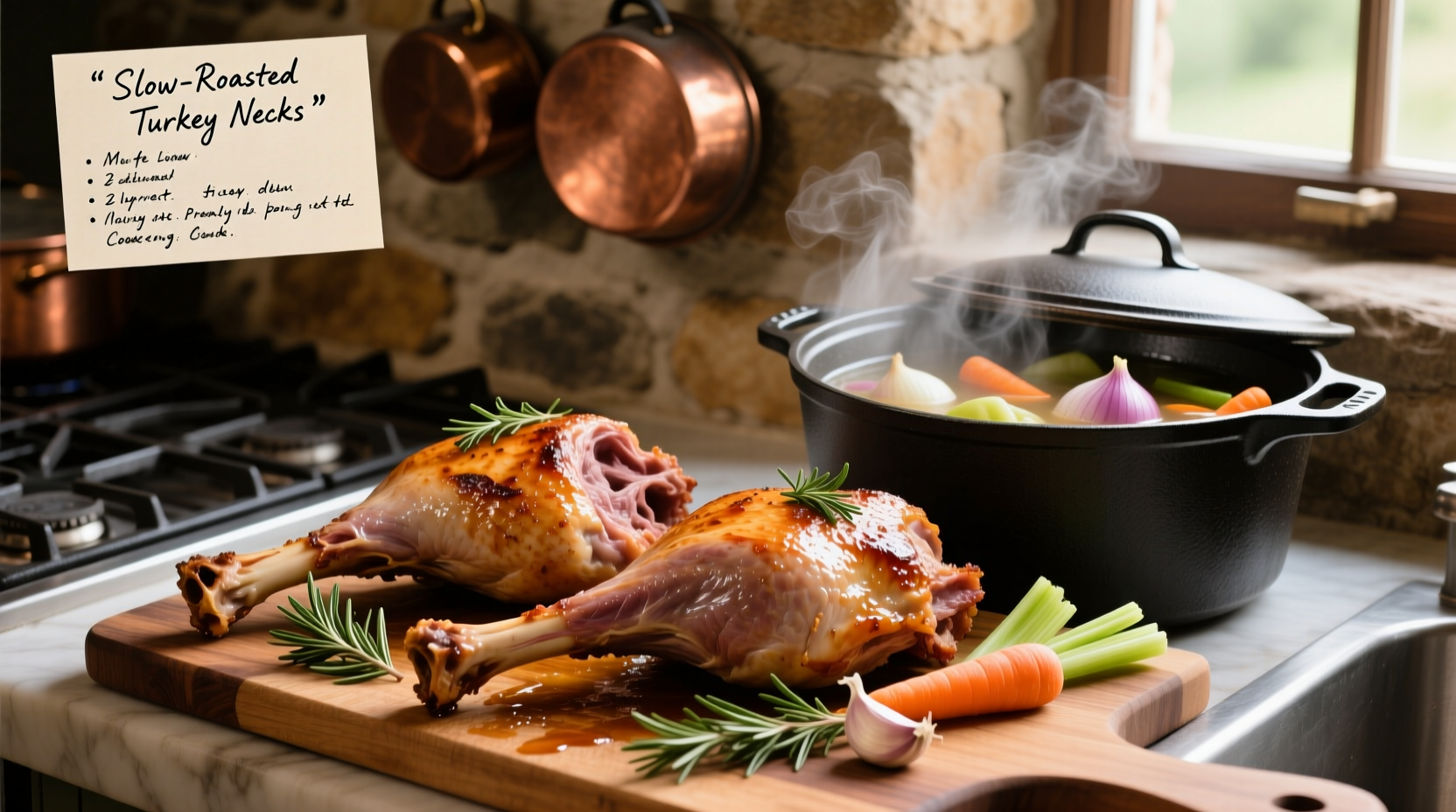Often overlooked but packed with rich flavor, turkey necks deserve a place in your culinary repertoire. These affordable cuts contain collagen-rich connective tissue that breaks down into succulent, fall-off-the-bone meat when cooked properly. As a culinary professional with years of experience transforming humble ingredients into extraordinary dishes, I've perfected techniques that guarantee tender results while maximizing flavor extraction.
Why Turkey Necks Deserve Your Attention
Turkey necks provide exceptional value for home cooks seeking deep, savory flavors without premium pricing. Unlike expensive turkey parts, necks deliver concentrated poultry essence ideal for soups, stews, and gravy bases. The USDA confirms turkey necks contain 21 grams of protein per 3-ounce serving while maintaining lower fat content than many alternative meat cuts.
| Cooking Method | Time Required | Texture Result | Best For |
|---|---|---|---|
| Simmering | 1.5-2 hours | Tender, shreddable | Broths, soups |
| Slow Cooker | 6-8 hours | Melts off bone | Set-it-and-forget-it meals |
| Oven Roasting | 3 hours at 275°F | Crispy skin, juicy meat | Centerpiece dishes |
Essential Preparation Steps
Proper preparation ensures food safety and optimal flavor development. Always handle raw turkey necks following USDA guidelines: keep refrigerated below 40°F until ready to use, prevent cross-contamination with other foods, and wash hands thoroughly after handling.
Cleaning process: Rinse necks under cold water, removing any remaining feathers or debris. Pat dry with paper towels before seasoning. For enhanced flavor, remove the tough membrane covering the bones - this allows seasonings to penetrate more effectively.
Three Proven Cooking Methods
Classic Simmering Technique
This traditional approach extracts maximum flavor while creating instant broth. Place 2 pounds of turkey necks in a large pot, covering with 6 cups of water or low-sodium broth. Add aromatics like 1 chopped onion, 2 celery stalks, and 3 garlic cloves. Bring to a gentle boil, then reduce heat to maintain a bare simmer.
Cook uncovered for 90 minutes to 2 hours, skimming foam during the first 20 minutes. The meat should pull away easily from the bone when done. This method produces how to make turkey neck broth for soups and how to cook turkey necks in broth with vegetables.
Slow Cooker Convenience
For hands-off preparation, arrange turkey necks in your slow cooker with 1 cup liquid (water, broth, or apple cider). Add seasonings like thyme, bay leaves, and black pepper. Cook on LOW for 6-8 hours. The extended cooking time breaks down collagen completely, creating incredibly tender meat perfect for how to cook turkey necks for sandwiches or salads.
Oven Roasting for Crispy Results
Preheat oven to 275°F. Season necks with salt, pepper, and your favorite poultry rub. Place on a rack in a roasting pan with 1 cup liquid in the bottom. Cover tightly with foil and roast for 3 hours. Remove foil for the final 30 minutes to crisp the skin. This technique works best for how to cook turkey necks as a main dish with sides.

Flavor Enhancement Secrets
Professional chefs know that liquid choice dramatically impacts final flavor. For how to cook turkey necks southern style, use apple cider vinegar and chicken broth with smoked paprika. For Asian-inspired versions, substitute half the liquid with coconut milk and add ginger and lemongrass.
Timing matters when adding acidic ingredients. Wait until the last 30 minutes to add vinegar or tomatoes - early addition can toughen the meat. For how to cook turkey necks with vegetables, add root vegetables during the final hour to prevent overcooking.
Contextual Cooking Considerations
Turkey necks behave differently based on their source. Heritage breed turkeys yield richer flavor but require longer cooking times than commercial varieties. Frozen necks need complete thawing in the refrigerator (24-48 hours) before cooking to ensure even results.
When preparing how to cook turkey necks for soup bases, avoid over-seasoning initially - you'll concentrate flavors during reduction. For direct consumption, season more generously since you won't reduce the cooking liquid.
Troubleshooting Common Issues
Tough meat: Undercooked necks remain chewy. Extend cooking time by 30-minute increments until fork-tender.
Bland flavor: Boost taste by adding a Parmesan rind during the final hour or finishing with fresh herbs.
Excess fat: Chill cooked broth overnight, then skim solidified fat from the surface before reheating.
Creative Serving Suggestions
Once cooked, remove meat from bones for how to cook turkey necks and rice dishes or sandwiches. The rich broth becomes the foundation for exceptional soups, gravies, or cooking liquid for grains. Many Southern kitchens use this technique for how to cook turkey necks and gizzards together in traditional recipes.
For weeknight meals, toss shredded meat with barbecue sauce for sandwiches. During holiday seasons, incorporate into stuffing or dressing recipes for added depth. Leftover meat freezes beautifully for up to 3 months when stored in its cooking liquid.
Frequently Asked Questions
Can I cook frozen turkey necks without thawing?
While possible, cooking frozen turkey necks extends cooking time by 50% and risks uneven results. USDA food safety guidelines recommend complete thawing in the refrigerator before cooking poultry products.
How do I know when turkey necks are fully cooked?
Turkey necks reach safe internal temperature (165°F) well before becoming tender. The meat should pull away easily from the bone with minimal resistance. Visual cues matter more than thermometer readings for this cut.
Are turkey necks healthy to eat?
Yes, when prepared properly. Turkey necks provide high-quality protein and contain collagen beneficial for joint health. Remove visible fat after cooking to reduce saturated fat content while maintaining flavor.











 浙公网安备
33010002000092号
浙公网安备
33010002000092号 浙B2-20120091-4
浙B2-20120091-4